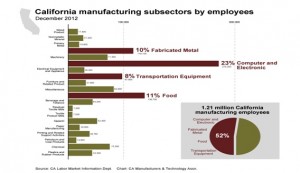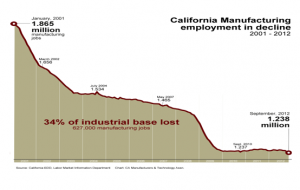There’s been a lot of negative press about the American solar industry in the past few months because six companies went bankrupt in 2011, even after receiving government loans. At least 12 U.S. manufacturers have suffered layoffs, plant shutdowns or bankruptcies over the past two years. Solyndra and Evergreen Solar are the most well-known because of media coverage about their government loans, but Beacon Power Corp, Mountain Plaza, Stirling Energy Systems, and Spectrawatt Inc. also went out of business, resulting in the loss of thousands of jobs. What’s behind the financial trouble that many of these American solar companies have experienced?
“Dumping” of solar cells and modules produced in China is the real culprit for the financial woes of the American solar industry. According to a report released by George Washington University in December 2011, China’s production of solar photovoltaic cells and modules has grown from 1 gigawatt (GW) to 20 GW in three years, and its industry now accounts for more than 50 percent of the global market. During the same period, prices for solar modules decreased to $1.40 per watt and may go down as low as $1 per watt. It is clear that over capacity in both purified silicon feedstock and module manufacturing have played a key role in the recent major price declines. The annual market for solar more than doubled between 2009 and 2010. For 2011, estimates of total market range from 21 to 24, which is a 44 percent increase from the year prior.
On October 19, 2011, SolarWorld, the largest U.S. producer of crystalline silicon photovoltaic products, filed antidumping and countervailing duty petitions at the International Trade Commission (ITC) of the Department of Commerce. The petition alleges that China is unfairly subsidizing its solar manufacturing industry with cash grants, multi-billion dollar preferential loans, raw material discounts, tax incentives, and currency manipulation. SolarWorld seeks to establish that Chinese companies could not possibly have production costs low enough to be selling modules and cells at their current prices in the U.S.
SolarWorld’s petitions were supported by six other members of the newly formed Coalition for American Solar Manufacturing, started by a group of seven U.S. solar manufacturers that has grown to 150 companies representing employing more than 14,650 workers. However, SolarWorld was the only U.S. manufacturer identified publicly in these petitions because the “unnamed companies are said to fear retaliation from essential Chinese suppliers and customers and, if they have facilities in China, the Chinese government.”
China’s Ministry of Foreign Commerce responded to these petitions as being overly protectionist and a threat to global economic recovery. China’s Suntech, the world’s largest solar panel maker, with manufacturing facilities in Goodyear, Arizona, stated that “a misguided solar trade conflict against China…could threaten the livelihood of the global solar ecosystem, particularly solar jobs in the U.S.”
U. S. opponents of the petition have formed the Coalition for Affordable Solar Energy (CASE) recruiting 132 solar companies as members representing 13,134 jobs. Kevin Lapidus, Sr. V. P<> of legal and government affairs for SunEdison, a lead member of CASE, said “Today the solar industry is 100,00 employees of which 57 percent are in the installation business, 21 percent are in sales and distribution, and only 14 percent are in manufacturing.” These companies benefit from the cheap Chinese products they sell, distribute, and install.
The petitions request that the ITC investigate imports of Chinese crystalline solar cell and modules but exclude thin-film products and solar technology that is not photovoltaic, such as solar thermal products.
The petitions seek relief for the U.S. domestic companies injured by Chinese imports and seek duties to offset Chinese dumping alleged to exceed 100 percent. “The countervailing duty petition alleges that China illegally subsidizes its solar industry by providing cash grants; discounted polysilicon and aluminum necessary for production of solar panels; heavily discounted land, power and water; multi-billion dollar preferential loans and directed credit; tax exemptions, incentives and rebates; and export grants and insurance. The countervailing duty petition also alleges that China’s currency undervaluation is an illegal subsidy.”
The next step is for the ITC to decide whether the petitions are legally and factually sufficient and are adequately supported by the U.S. industry. During such investigations, the Commission gathers information from the U.S. industry and the ITC gathers information from the foreign government and industry.
On December 2, 2011, the ITC issued a unanimous preliminary determination that Chinese trade practices are harming the U.S. domestic solar manufacturing industry. The next step in the trade case will be Commerce’s preliminary determination on whether to levy countervailing import duties to offset the effects of any illegal Chinese subsidies. The finding of “critical circumstances” means that if the agency imposes preliminary countervailing duties on March 2, the duties will apply to all imports of cells and modules from Chinese exporters that were brought into the United States starting Dec. 3, 2011.
This critical-circumstances ruling marks the first time that Commerce has issued such a finding in advance of a preliminary countervailing duty determination. Aside from the determination on countervailing duties, the agency is scheduled to issue a separate preliminary ruling on anti-dumping duties on March 27. Commerce will issue a separate critical-circumstances ruling in the anti-dumping investigation. A final decision from the U. S. ITC can take up to a year.
On February 7, 2012, the National Renewable Energy Laboratory posted a revised research presentation on the NREL website, which CASM praised. The presentation concludes Chinese production of crystalline silicon solar technology for the U.S. market costs more than U.S. production for the domestic market, when the costs of shipping are included.
CASM contends the findings validate its position that the Chinese solar-manufacturing industry doesn’t enjoy a cost advantage in solar production costs but, rather, benefits from a government-underwritten export campaign designed to injure competition from U.S. manufacturers.
The NREL presentation, “Solar PV Manufacturing Cost Analysis: U.S. Competitiveness in a Global Industry,” concludes that Chinese producers have an inherent cost advantage of no greater than one percent, compared with U.S. producers. However, when trans-ocean shipping costs are counted, Chinese producers face a 5 percent cost disadvantage, according to the analysis…Massive government subsidies the government says, sponsor the Chinese industrial drive to export about 95 percent of domestic production, a campaign that has already seized 55 percent of global market share.”
“This analysis from the renewable-energy research arm of the U.S. government corroborates our view that an export drive sponsored by the Chinese government is improperly intervening in the U.S. market,” said Gordon Brinser, president of SolarWorld Industries America Inc., based in Oregon. “Highly efficient U.S. producers like SolarWorld can vie with any company in the world in legal competition. But the government of China’s illegal trade practices are neither economically nor environmentally sustainable for anyone. Free trade is trade free of illegal foreign government intervention.”
“We are countering the illegal trade practices of China and its state-sponsored industry only as a first step to reviving renewable-energy competition, manufacturing and jobs and augmenting national energy security and world environmental stewardship,” Brinser said. “All of the advantages of solar should be available to the United States and to the competitive U.S. industry that pioneered this technology.”
Chinese silicon solar PV producers more than doubled their exports of crystalline silicon solar cells and modules in advance of potential U.S. government duties on those imports, according to an evaluation of PIERS’ reports, which are based on US Customs and Border Protection Automated Manifest System data.
“This significant increase in imports demonstrates that the Chinese know they have violated U.S. and international trade rules and are trying to evade the consequences,” said Gordon Brinser, president of SolarWorld Industries America Inc., based in Oregon. “Year to date, Chinese imports of solar cells and modules in 2011 are up 346 percent by quantity and 138 percent by value. Since 2008, Chinese imports have risen 939 percent by value and 1664 percent by quantity. This most recent surge of Chinese solar imports gives the U.S. Department of Commerce the evidence it needs not only to make a preliminary determination in our favor, but also to apply a critical-circumstances finding to address this last-minute import surge.”
“The Chinese have made it clear that, contrary to various World Trade Organization agreements they signed 10 years ago, they will employ any means necessary to dominate the American and international solar markets,” Brinser said. “Rather than reward the Chinese for cheating, Commerce and the International Trade Commission need to take every possible action to enable American manufacturers to compete fairly.”
Most of the solar technology was developed in the U. S., but the Chinese government decided the industry was something it wanted to dominate and provided the financing necessary to its manufacturers to build the capacity to do so enabling China to take a dominant market position. Chinese companies such as LDK Solar, JA Solar, Suntech, and Trina Solar obtained billions of dollars in financing from the China Development Bank in the last five years.
In contrast, the U.S. solar industry has had to rely on a tax credit to fund its expansion until federal stimulus money gave a jolt to the industry. This funding was given to solar and wind project installers, not manufacturers. Investor advisor, Travis Hoium wrote, “Since it was a tax credit, it often required a tax equity investor, often a foreign company, to fund the project. The subsidy was there, but instead of being direct, it was convoluted and too complex to be as effective as China’s subsidies in building an industry.”
He added, “The stimulus money helped in some ways. The 1603 Treasure Program turned the tax credit into a cash grant for 30% of a renewable energy installation’s cost, helping attract more investors. But more direct funding blew up in the government’s face. The Solyndra debacle showed that loan guarantees don’t guarantee success and that the government probably isn’t the best at picking industry winners. The outrage after the company’s collapse could be heard around the country.”
This shows the contrast in the ways that China and the U.S. have subsidized their solar industries. As a capitalistic economy, the U. S. doesn’t want direct government meddling in business. On the other hand, China will subsidize businesses to create jobs and help them maintain their position as the world’s #1 exporter.
Filing a trade case is the last resort for an industry harmed by China’s “dumping,” government subsidies, and currency manipulation. Other industries that have been forced to file similar cases are steel, semiconductors, textiles, furniture, and tires. This latest case is part of a long trend of industries on the verge of being wiped out by China’s predatory mercantilism. Our elected leaders seem to be afraid to do anything because it would start a trade war. When are our leaders going to realize that we are already in a trade war, and China is winning? If China can defeat us in an economic war and destroy the economy of the United States, they won’t have to fight us in a military war. It’s time for our elected to have the courage to stand up to China and address China’s “dumping” and currency manipulation. We Americans need to demand action!

